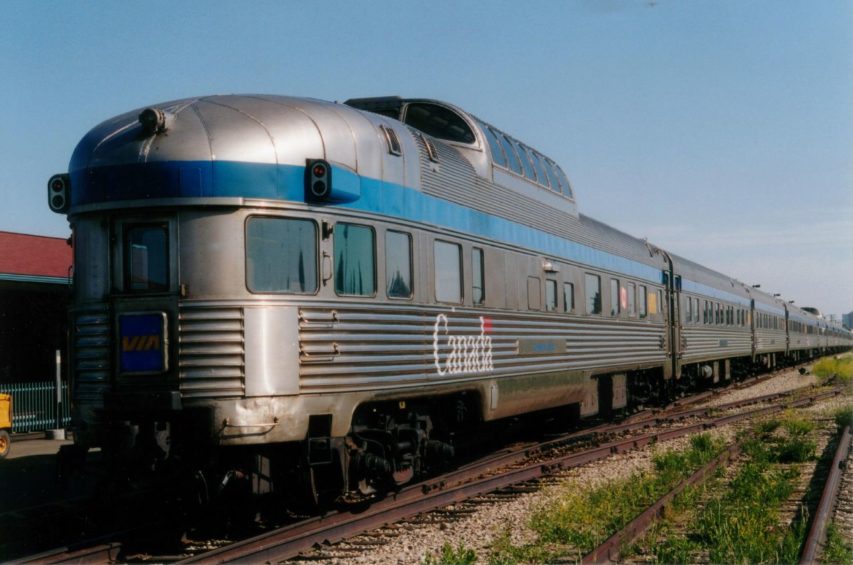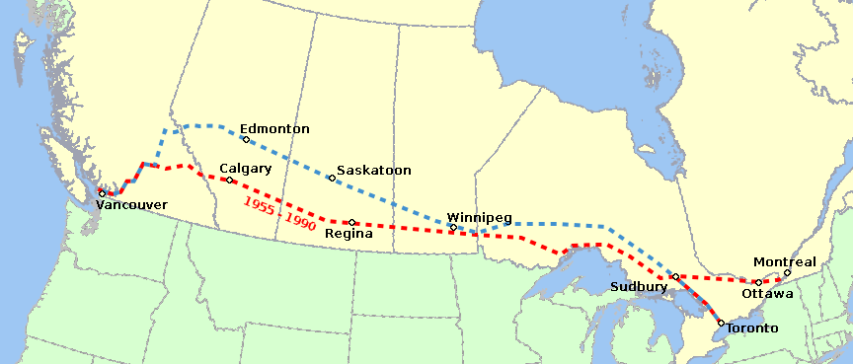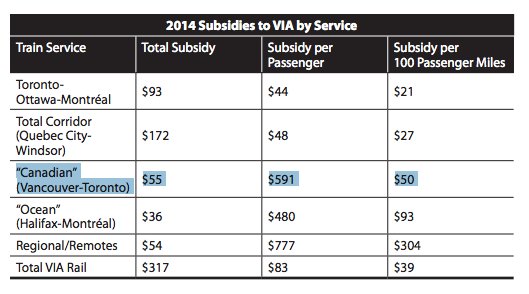Published on 19 May 2017
Progressives are freaking out now that the Federal Communications Commission (FCC) is beginning the repeal of Net Neutrality regulations, which give the government the right to regulate Internet Service Providers (ISPs).
—————-
The main arguments in favor of Net Neutrality are really arguments guarding against hypotheticals: that ISPs could otherwise block and censor content (they never have) or that they’ll run their operations like shakedowns, requiring content providers to pay up or slow their traffic to molasses. The main documented instance of an ISP favoring one content provider over others wasn’t sinister collusion. Metro PCS offered unlimited YouTube in a budget data plan but not unlimited Hulu and Netflix, because YouTube had a compression system that could be adapted to the carrier’s low-bandwidth network. In a different context, critics might have applauded Metro PCS, since bought by T-Mobile, for bringing more options to lower-income customers.Net Neutrality is a proxy battle over what type of internet we want to have — one characterized by technocratic regulations or one based on innovation and emergent order. Progessives are generally suspicious of complex systems existing without powerful regulators present and accounted for. Small-government folks are repulsed by bureaucrats in general, and think the internet will fair better in a state of benign neglect. The FCC has come down on the side of an organic internet, instead of treating the internet more like a public utility.
We don’t know how the internet is going to evolve over time, but neither do the government administrators trying to rein it in. But given the record of free-market innovation vs. government-regulated services, the odds are with market forces and entrepreneurs.
Written and performed by Andrew Heaton, with writing assistance from Sarah Rose Siskind and David Fried.
Edited by Austin Bragg and Siskind.
Produced by Meredith and Austin Bragg.
Theme Song: Frozen by Surfer Blood.
May 20, 2017
Net Neutrality Nixed: Why John Oliver is Wrong
On board The Canadian
The Toronto Star‘s Jennifer Bain takes a trip on VIA Rail’s premier passenger train from Toronto to Vancouver:

VIA dome observation car, 2007. Photo by Savannah Grandfather (Wikimedia)
ABOARD THE CANADIAN-That first overnight on the train was a gloriously sleepless blur disrupted by clickety clacks, rumbles, grinding squeals and ding, ding dings. Alone in F-130 in the Château Cadillac car on a Murphy bed pulled down from the wall to fill the room, I stared mesmerized through an extra-large window into the dark depths of northern Ontario and thought deeply Canadian thoughts.
Happy 150th birthday, Canada. This year cries out for a celebratory road trip. I use the term road loosely. A train track will do just fine. Let someone else drive. For four nights on the Canadian, Via Rail Canada’s iconic train from Toronto to Vancouver, I relaxed and watched boreal forest become prairie and then mountains.
Somewhere north of Sudbury that first morning, I threw on clothes and tiptoed down the narrow hall, hands outstretched to brace for sways and lurches, through the Château Dollard sleeping car to the end of the train.
The Laurentide Park car is tricked out with a downstairs lounge and upstairs domed seating area. The DIY tea and coffee station became my watering hole.

Routes of The Canadian: the original 1955 route is in red (on CPR trackage) and the current route is in blue (mainly on CN tracks). VIA took over operation of The Canadian in 1978 and changed to the current route in 1990.
You are in your own world on the Canadian, but not necessarily alone. Work on the lost art of small talk in the dining car when you’re seated with strangers. Play a board game with fellow passengers since there’s no Wi-Fi and often no cell service.
This 4,466-kilometre journey is a throwback to simpler times.
Jason Shron — a train nut from Thornhill that I met through Box — has done the Canadian upwards of 40 times and found “there’s a tendency for people on the train to spill their guts to strangers,” especially if they’re on divorce tours, which can become awkward the next day. “There’s a certain magic to that,” he admitted. He was taking his three kids to Winnipeg to meet his wife and other family for Passover.
Shron owns Canada’s largest model train company, built a section of a full-size Via car in his basement, is restoring two train cars and is writing a book about Via for its 40th anniversary next year. The Crown corporation “doesn’t celebrate its own history and doesn’t celebrate its own people” nearly enough, he lamented, and so he’s “like this one-man Via fan club.”
Make that two. Shron and Box love trains for different reasons — the actual machines and the art of train travel — but they are anomalies. Too many Canadians have never been on a train, much less slept on one.
Trains are not a part of our modern lives or lexicon, so my learning curve is steep. Passenger trains don’t have cabooses, conductors are obsolete and drivers are called engineers. Freight trains have priority in Canada when there’s one line, so passenger trains like the Canadian have to wait on the siding, causing delays.
There are economy-class seats that you sleep upright in, and banks of seats that convert into upper and lower “berths” at night with just a curtain for privacy. There are private rooms, some with a toilet that gets covered when the bed comes out, and a shared shower down the hall. I was lucky enough to experience “Prestige class” in a room with an L-shaped couch, Murphy bed and private en-suite washroom, with access to a trio of concierges, reserved seating at the front of the dome car, meals, booze and all the Earl Grey I could drink.
Part of the reason “many Canadians have never been on a train” is that there are a lot fewer trains running today than in years past: when VIA took over most intercity passenger service, it rationalized a lot of the routes (but not enough to become profitable, hence the federal government’s ongoing subsidies to VIA). Even with those subsidies, passenger trains aren’t a bargain for the average traveller, and usually compare poorly to bus or air travel in both cost and frequency. Most of VIA’s trains lose money, as this table from 2014 shows:

So, how expensive is the trip that Ms. Bain took? I went to the VIA website to find out. Booking a trip from Toronto (in my case, Oshawa) to Vancouver on The Canadian to leave today (Saturday) would cost an eye-watering $9,684.10 per person in Prestige class (including a $500 service fee, but not including HST [Harmonized Sales Tax] of $1,114.10). There are cheaper fares — booking in advance, not taking the Prestige class ticket, other available sales, etc. — but a quick Google search shows return flights in the $600 range (but I could save $226 off that if I booked for tomorrow instead of today).
For a potted history of The Canadian there’s a useful Wikipedia page.
“Trump has always said the kinds of things that most of us learn to think the better of around our freshman year of high school”
Megan McArdle on the calls to impeach or otherwise depose Il Donalduce (soft coup, anyone?):
Trump has always said the kinds of things that most of us learn to think the better of around our freshman year of high school — not just the tragic wailing about how hard everyone is on him, but also the needy self-flattery: When he isn’t claiming that he knows more about Islamic State than our nation’s generals do, he is putting similarly laudatory words in the mouths of the brilliant and impressive people who apparently constantly ring him up so they can gush like tween fangirls at a Justin Bieber concert. Does he expect people to believe these utterances? I have no idea. But the reason most people don’t say such things is that whether you expect them to or not, no one ever does.
As for the rest … the twitter rants? Check. The lack of respect for longstanding political and institutional norms? Check. The outrageous, uncalled-for attacks on anyone who gets in his way? Check-plus. All quite evident before the American public went to the polls in November. And that is the rub.
It’s one thing to remove a president who is clearly no longer the man (or woman) we elected to the office. But this is what Americans, in aggregate, pulled the lever for. Do his staffers and Congress have the right to step in and essentially undo that choice?
Even as a thought experiment, that’s a tough question. It becomes much tougher still when we are not in a tidy textbook, but in a messy real world where his followers, having voted for this behavior, do not recognize it as a sign of impairment. If Trump is removed now, they will see the removal not as a safeguard, but as a soft coup. And they won’t be entirely unjustified. The damage to our political culture, and its institutions, would be immeasurably grave.
I think there’s a case for removing Trump on the grounds that he is clearly not competent to execute the office — not that he has committed “high crimes and misdemeanors,” but that he simply lacks the emotional and mental capacity to do the job. But preserving the very norms he’s destroying requires that removal not be undertaken until things have reached such a state that most of his followers recognize his problems. So those of us who believe that the competence of the executive matters — that there are things worse in a president than “more of the same,” and that what we are now seeing is one of them — will simply have to hope like heck that his supporters come to the same conclusion we have before he damages much more than his own reputation, and the hopes of the people who elected him.
Top 10 ugliest Warships (Pre 1930’s)
Published on 31 Jul 2015
WARNING! Ugly lives here! My Top 10 ugliest warships (Pre 1930’s) This video showcases some of the ugliest warships ever made. From a sunken barn with a gun mounted on top, to a Russian UFO…these ships look better sunk then floating.
QotD: Speaking (actual) truth to (actual) power
Nobody should want journalists ever to fear attacking the behavior of the U.S. military when they have actual evidence that it is wrong. Militaries are dangerous and terrible things, and a free press is a vital means of keeping them in check. It is right and proper that we make heroes of those who speak damning truths to power.
But it makes all the difference in the world when a journalist does not have actual evidence of wrongdoing. Especially when the journalist is a U.S. citizen and the claim gives aid and comfort to the declared enemies of the U.S. in wartime. Under those circumstances, such an attack is not heroic but traitorous.
I hope this is a teachable moment. Oliver Wendell Holmes observed that shouting “fire” in a crowded theater is not protected speech; if the speaker has no evidence of actual fire, the consequences to that speaker should be as dire as the risk of death by trampling he created for others. The Holmes test should be applied in politics as well.
[…]
After Vietnam and Watergate, a lot of journalists (and other people) lost the distinction between speaking truth to power and simply attacking whoever is in charge (especially any Republican in charge) on any grounds, no matter how factually baseless. Mere oppositionalism was increasingly confused with heroism even as the cultural climate made it ever less risky. Eventually we arrived at the ludicrous spectacle of multimillionaire media personalities posing as persecuted victims and wailing about the supposed crushing of dissent on national news and talk shows.
Eric S. Raymond, “Lies and Consequences”, Armed and Dangerous, 2005-02-12.



